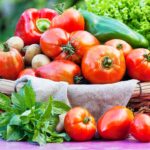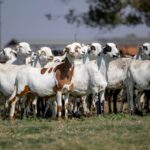South Africa’s diverse climate and geographical conditions create a variety of agricultural climate zones across the country, each suited to different crops and farming practices. Understanding these climate zones is essential for farmers to make informed decisions about which crops to grow, when to plant, and what equipment to use to optimize productivity. In this article, we explore the different agricultural climate zones in South Africa and discuss how equipment plays a crucial role in maximizing yields.
South Africa’s Agricultural Climate Zones
South Africa’s agricultural climate can be broadly divided into four main zones:
- Summer Rainfall Region
The summer rainfall region spans much of the central and eastern parts of the country. Characterized by warm temperatures and rainfall during the summer months (October to March), this region supports crops like maize, sunflower, sugarcane, and various fruits like citrus and grapes. The soil types here range from fertile to more arid and sandy, which can influence irrigation and cultivation practices. - Winter Rainfall Region
The winter rainfall region is predominantly found along the southwestern coastline, including parts of the Western Cape. This area receives rainfall mostly during the winter months (May to August), making it ideal for growing cool-season crops such as wheat, barley, and various vegetables. The relatively mild winters and fertile soils of this region support the production of high-quality grains and horticultural crops. - Arid and Semi-Arid Regions
South Africa’s western and northern regions, including the Karoo and parts of the Northern Cape, are characterized by low rainfall and dry conditions. Agriculture in these areas is often dependent on irrigation, and crops are generally limited to drought-tolerant varieties, such as sorghum, millet, and certain types of vegetables. Livestock farming, particularly sheep and goats, is also common in these regions. - Subtropical Region
The subtropical region, found in the northeastern areas of the country, including parts of Limpopo and Mpumalanga, experiences high temperatures and year-round rainfall. This climate is ideal for growing tropical fruits like bananas, pineapples, and avocados, as well as crops like maize and tobacco. The region’s humid climate requires careful management of pests and diseases to ensure optimal crop production.
How Equipment Plays a Role in Agricultural Success
In each of these climate zones, the proper use of equipment is essential to achieving high crop yields and maintaining sustainable farming practices. Below are some of the key ways in which equipment helps farmers navigate the challenges posed by South Africa’s diverse agricultural climates:
- Irrigation Systems for Arid and Semi-Arid Zones
In regions with limited rainfall, irrigation systems such as pivot irrigation, drip irrigation, and flood irrigation are crucial for maintaining soil moisture and supporting crop growth. Modern irrigation equipment allows farmers to conserve water, optimize water distribution, and adapt to changing climatic conditions. Automated systems also help monitor soil moisture levels, ensuring that crops receive the right amount of water at the right time. - Tractors and Tillage Equipment for Soil Preparation
In areas with varying soil types, especially in the summer rainfall region, tractors equipped with plows, harrows, and cultivators are vital for preparing the soil for planting. Proper soil preparation ensures good seed-to-soil contact, improves water infiltration, and encourages root development. The use of tillage equipment helps break up compacted soil, which is common in regions with heavy rainfall or irrigation. - Harvesting Equipment for Timely Collection
The timing of harvests is crucial in all climate zones, and harvesting equipment like combines, headers, and forage harvesters ensures crops are collected at their peak. In the subtropical region, where fruit crops like citrus and avocados require delicate handling, specialized harvesting equipment can reduce damage to the crops and ensure high-quality produce. - Sprayers and Pest Management Tools
In areas with high humidity and frequent rainfall, pests and diseases can proliferate rapidly. In regions like the subtropical zone, sprayers equipped with pesticides or organic solutions help protect crops from damage. Modern sprayers are designed to distribute chemicals evenly and efficiently, minimizing waste and environmental impact. Integrated pest management tools, including drones and sensors, are also becoming increasingly common in high-tech farming systems. - Climate-Smart Equipment for Sustainable Practices
As climate change affects agricultural productivity across South Africa, farmers are increasingly turning to climate-smart technologies to mitigate the impact of extreme weather events, such as droughts and floods. This includes the use of precision farming equipment that uses sensors and GPS to monitor soil health, crop growth, and environmental conditions in real time. By using this data, farmers can adjust irrigation, fertilization, and pesticide applications to maximize efficiency and reduce costs. - Livestock Management in Arid Regions
In the arid and semi-arid regions where livestock farming is prevalent, specialized equipment such as feed mixers, automated watering systems, and livestock tracking devices can help manage herds more effectively. For instance, automated feeders ensure that livestock receive the correct amount of nutrition, while remote monitoring systems help track animal health and location.
South Africa’s agricultural climate zones present unique challenges and opportunities for farmers. Understanding the distinct characteristics of each zone allows farmers to make informed decisions about crop selection, planting schedules, and resource management. The role of equipment in this process is undeniable, as it helps farmers adapt to varying conditions, improve productivity, and implement sustainable practices. Whether through advanced irrigation systems, precision farming technologies, or specialized harvesting equipment, the right tools can make a significant difference in achieving successful agricultural outcomes across the country.
Join 'Farmers Mag' WhatsApp Channel
Get the latest Farming news and tips delivered straight to your WhatsApp
CLICK HERE TO JOIN






